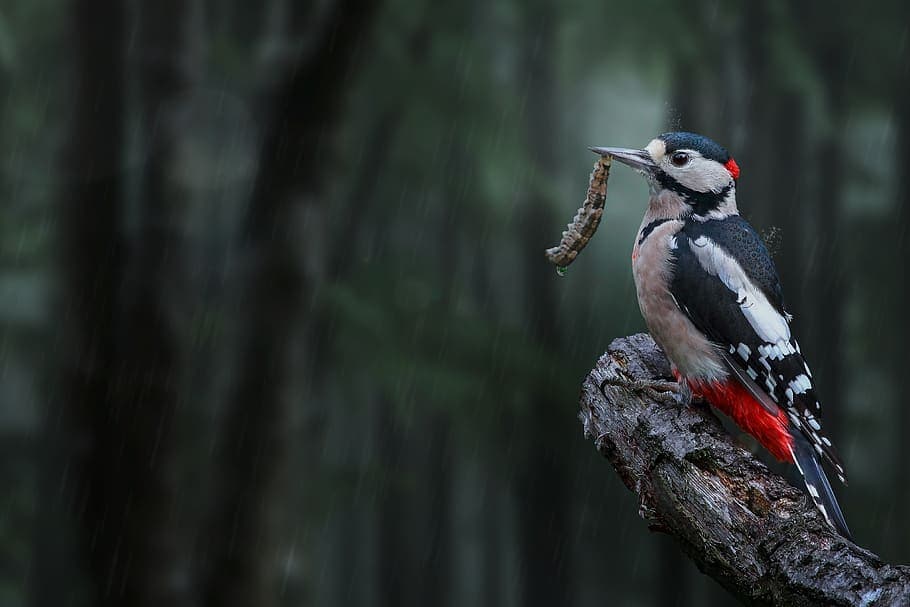Woodpeckers are no strangers to humans, but the details about them are not widely known either. We know what their distinctive features are and where they live, and that’s pretty much it. For starters, there are 18 woodpecker species in Cambodia which is surprisingly a lot. This is going to be a long read so let’s find out about each of them below.
Bay Woodpecker (ត្រសេះចំពុះលឿងព្រលែត)

This woodpecker species is a medium-sized bird that grows from 26.5 to 30 centimeters long. Male bay woodpeckers have a brown crown, a short crest and nape with streaking, and a pale brown forehead. They also have a red patch on the back of their head along with bright rufous overall body. As for females, they have a pale head without red coloration on the neck.
The bay woodpeckers live in South Asia and Southeast Asia, mostly in subtropical and tropical moist lowland forests. At the same time, they also live in evergreen forests, mixed deciduous forests, subtropical or tropical moist montane forests as well. Throughout those habitats, these woodpeckers feed on a number of insects such as ants, termites, and wood-boring beetles. Occasionally, they may also consume berries as well.
Black-Headed Woodpecker (ត្រសេះបៃតងក្បាលខ្មៅ)
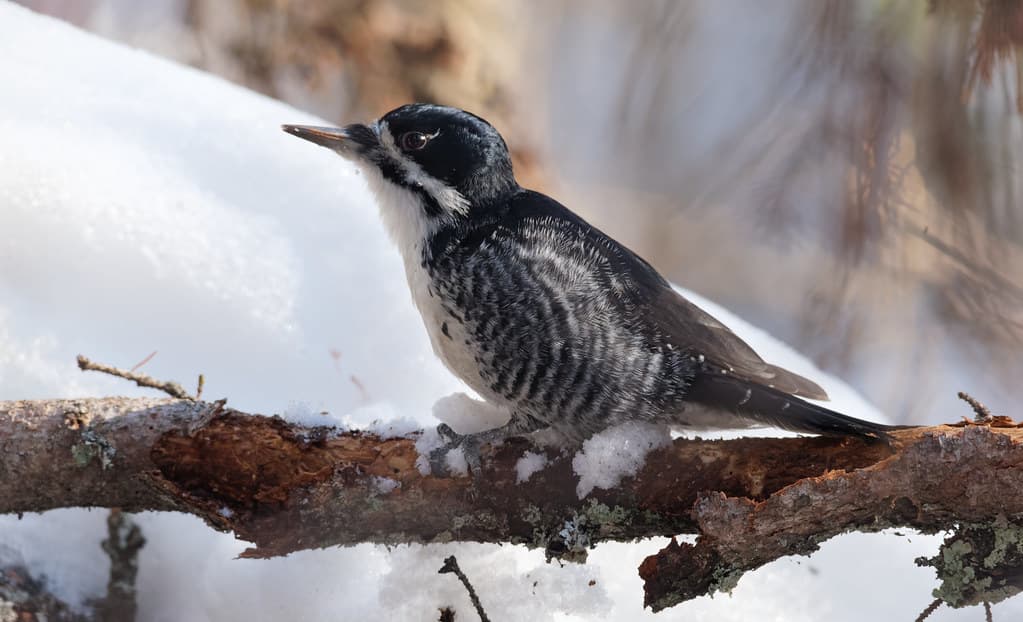
As a medium-sized bird, a black-headed woodpecker grows to around 33 centimeters big. The adults of this species have attractive plumage along with green wings, yellow throat, and a red lower back. They have a black face and a white stomach, and they have a thin white line from their eye to neck. You can notice males by the red crowns because females have a completely black crown with no red at all. Both males and females have a large head and long powerful bill that allow strong wood pecking.
The black-headed woodpeckers live in some countries in Southeast Asia including Cambodia, Laos, Myanmar, Thailand, and Vietnam. In those countries, these loud birds live in coniferous and deciduous forests. At the same time, they also prefer dry dipterocarp forests, semi-evergreen forests, riverine forests, and savanna forests. Where they live, they feed on insects such as ants, beetles, termites, and many other insects and invertebrates from tree barks.
Common Flameback (ត្រសេះតូចខ្នងភ្លើង)
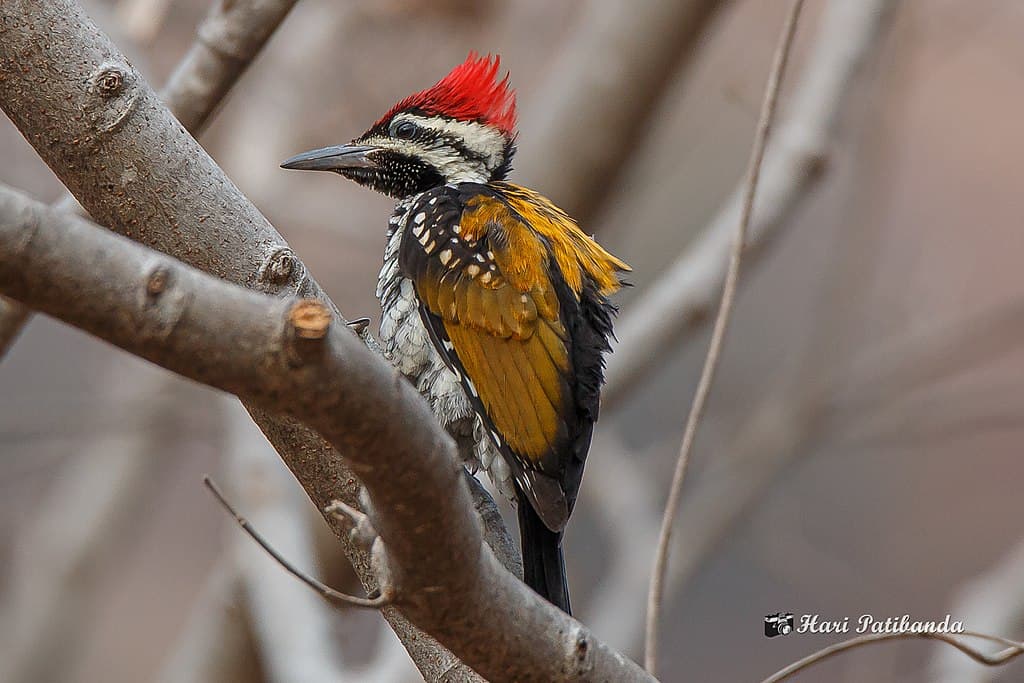
The common flameback also goes by the name common goldenback, and this woodpecker species is a small bird. Growing to around 28 to 30 centimeters, they have one of the most distinctive appearance among other woodpeckers. Male common flameback has a bright red crest while the females have a black crest with white streaks. Besides the unique appearance, both males and females have a white supercilium, white cheek stripe, and white throat. While most woodpecker species have large or long bills, this one is rather small so wood pecking does not involve.
Their distribution is across South Asia and Southeast Asia as well as the Indochinese peninsula. Since they are secretive and shy birds, seeing them in urban areas is very unlikely. Common flameback lives in a wide range of habitats such as forest edges, mangroves, moist open forests, parks, and scrubs. More than that, they also love living in lowland areas as well. With small bills, they glean and probe trees to forage for food instead of wood pecking. Their diet consists of ants, slow-flying insects, and many other insects they can find beneath the tree bark.
Freckle-Breasted Woodpecker (ត្រសេះមធ្យមខ្មៅ ស)
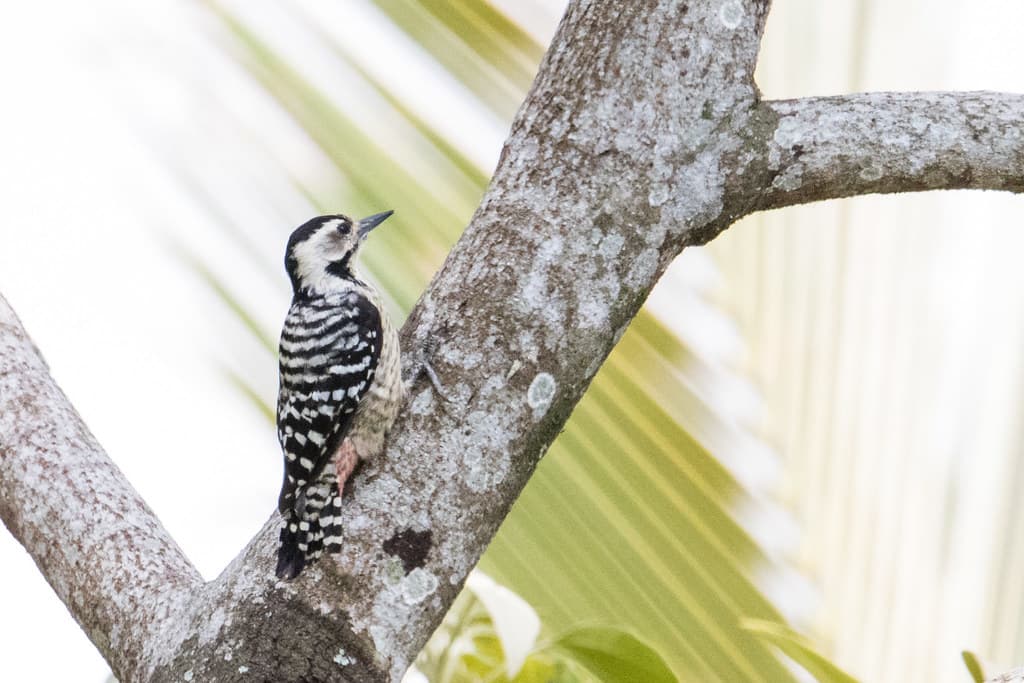
A freckle-breasted woodpecker is a medium-sized bird that grows to around 28 centimeters. It has black upperparts with heavy bars along with red under tail, breast, and belly. Similar to many other woodpeckers on the list, this one lives in some Southeast Asian countries. Those include Cambodia, Indonesia, Laos, Myanmar, Thailand, and Vietnam where forests are favorable for them. The natural habitats of these birds are subtropical or tropical dry forests and subtropical or tropical moist lowland forest. At the same time, they also live in gardens, grasslands, open and secondary forests, subtropical or tropical moist montane forests. Those areas have abundant meals for them such as ants, large larvae, and small scorpions as well as berries and fruits.
Gray-Capped Pygmy Woodpecker (ត្រសេះតូចខ្មៅស)

As you can see, a gray-capped pygmy woodpecker is a small bird growing from 20 to 30 centimeters. It has barred black and white above along with unbarred central tail feathers while the underside has a dark buff with a prominent dark streaking. The bird also has a dark gray crown, with a red nape in males, and strong black eye stripes. Their faces are whitish with a brown band passing over their eyes to the feathers covering their ears. This bird is a dark woodpecker with dark irides, gray feet, and grayish bill.
Gray-capped pygmy woodpeckers have a long range from the Himalayas and Manchuria all the way to Southeast Asia. These regions provide natural habitats to these birds including subtropical or tropical mangrove forests and subtropical or tropical moist lowland forests. Some also live in diverse woodlands, secondary forests, scrub forests, subtropical or tropical moist montane forests where food is many. Their most favorable meals are ants, beetles, caterpillars, cicadas, flies, grasshoppers, grubs, leafhoppers, pupae, termites, along with fruits and plant matter.
Gray-Headed Woodpecker (ត្រសេះបៃតងក្បាលប្រផេះ)
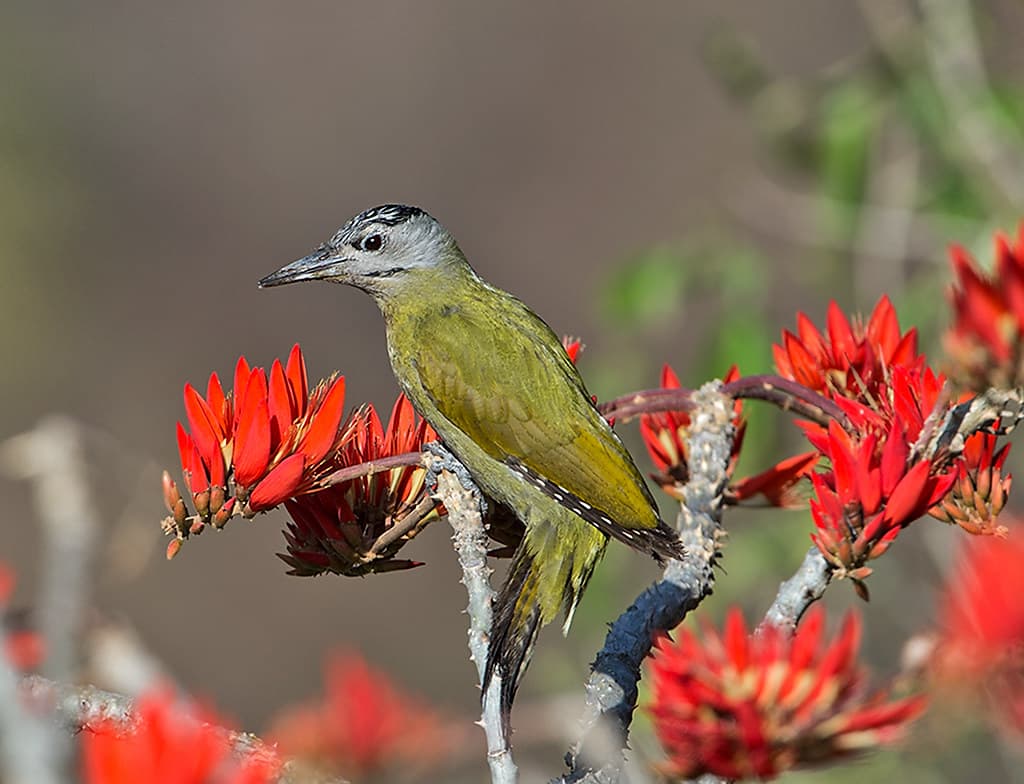
Looking very sharp, the gray-headed woodpeckers are 25 to 26 centimeters in size. The males have a gray head with a red fore crown along with a black line across the lores. They also have a narrow black mustache stripe that you can easily notice as well. Their breast and underparts are pale gray while the back, scapulars, and wing coverts are green. Meanwhile, females lack the red fore crown but have fine black streaks on the crown. Both sexes have dark gray or black beak and red to brown eyes while the legs are greenish-gray.
Their distribution is across Central, Eastern, and Northern Europe as well as Asia and Southeast Asia. The habitats of these woodpeckers are forest verges, gallery forests, and humid forests. Their diet consists of beetle larvae, caterpillars, crickets, flies, lice, spiders, and wood ants along with berries, other fruits, and vegetable matter. The interesting part is that they have long tongues that they can dart forward to capture insects.
Greater Flameback (ត្រសេះធំខ្នងភ្លើង)
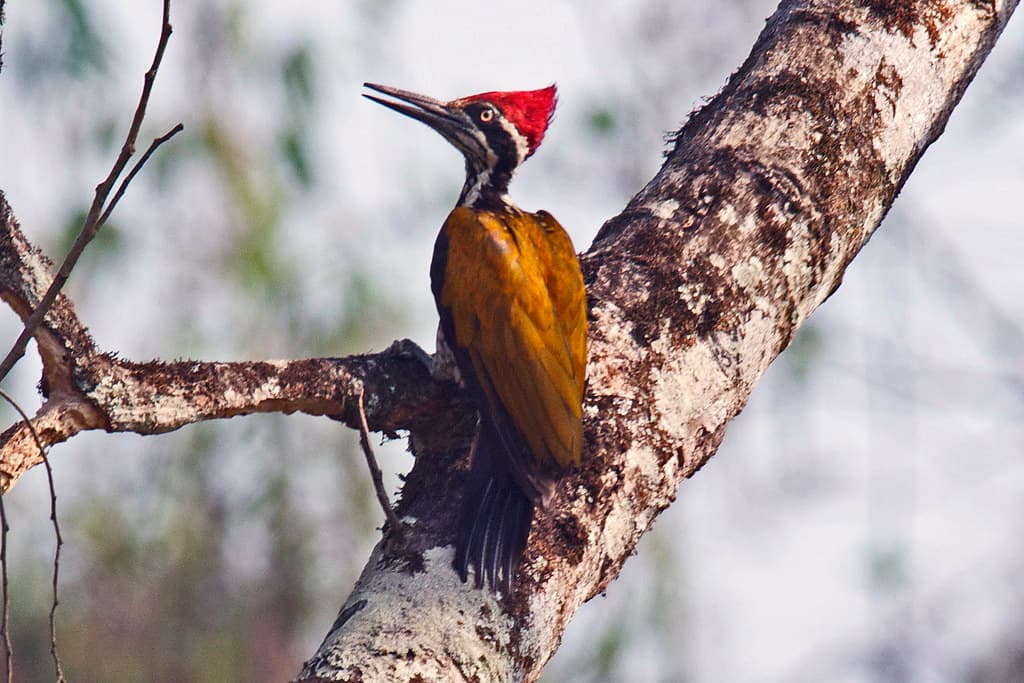
With a similar appearance to the common flameback but larger, greater flameback woodpeckers grow as big as 33 centimeters. The bird has an erect crest and a long neck, and the head is whitish with a black pattern. It has a straight pointy bill that is longer than its head. They always have unmarked golden-yellow to dark brown back and wings while the underparts are white with dark markings. It is a common fact that many woodpeckers have a long tongue, but this species is rather impressive. The bird has a very long tongue that is almost 10 centimeters in length which is quite long.
Greater flameback occurs widely in tropical Asia, from the Indian subcontinent all to the way to Southeast Asia. The greater flameback woodpeckers live in a rather open forest habitats as well as mangrove forests. When looking for food, their zygodactyl feet and stiff tail provide support as they stand on the tree trunks. At the same time, they use their bill to dig out food from trees or sometimes dart their long tongue to extract food. Some of the most common food are small invertebrates and wood-boring arthropods as well as fruits, nectar, nuts, and seeds. The concerning thing about this woodpecker species at the moment is the habitat loss due to constant human encroachment.
Greater Yellownape (ត្រសេះធំកំប៉ោយលឿង)
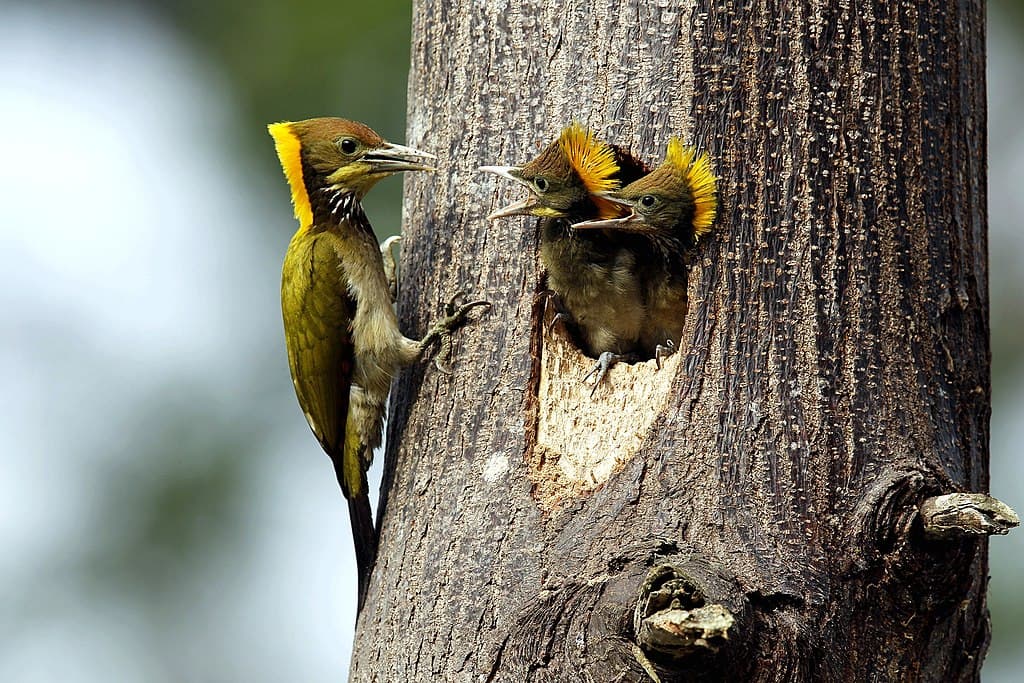
A greater yellownape is a woodpecker that has yellow-crested nape and throat along with dark olive green plumage with gray underparts. The bird’s crown is brownish while the flight feathers are chestnut with black bars. This woodpecker species has a wide range from East Asia and Indochina to Southeast Asia. Across their ranges, they are found in subtropical and tropical montane forests where they feed on insects. These birds like living in dead parts of large trees, making nests in tree trunk cavities.
Great Slaty Woodpecker (ត្រសេះដំរី)
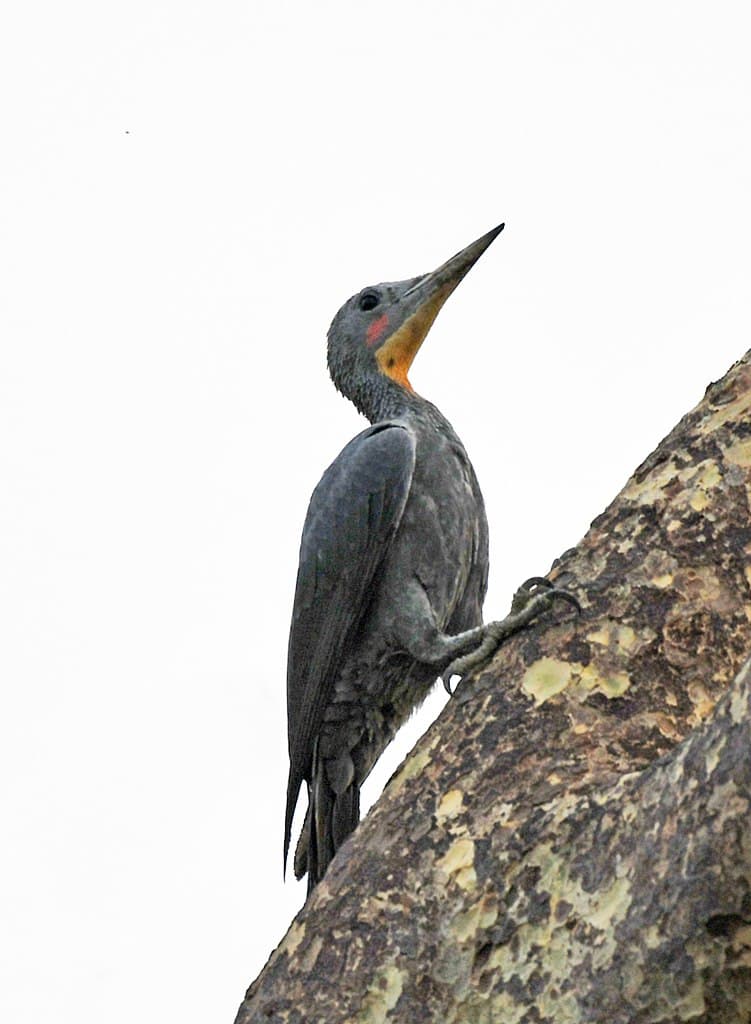
Both the appearance and size of this woodpecker species cannot be mistaken with any other woodpeckers out there. Being the biggest woodpecker species, the great slaty grows to a length of 48 to 58 centimeters. These chiseling birds are very easy to recognize due to the obvious distinctive features that they have. A great slaty woodpecker has a blackish slate-gray or dark gray plumage with white spots, and it has a long tail. The bird has very long and strong chisel-tipped bill, elongated neck, pale gray throat with small red mustache in males.
The great slaty woodpeckers live across the Indian Subcontinent and Southeast Asia where favorable habitats are abundant. They inhabit areas with moist deciduous, primary semi-open, and tropical evergreen forests as well as clearings with scattered tall trees. At the same time, they also live in mangroves with tall mature trees, mature sal forests, and swamp forests as well. The trees do not only benefit their nesting but also food. These areas are full of insects that they feed on such as ants, stingless bees, termites, and wood-boring beetles. Sometimes they also feed on small fruits that they can find in the forests as well.
Illegal logging affects the population of this large woodpecker species at a very concerning rate. The breeding and feeding of these woodpeckers depending entirely on large old trees, and those trees begin to disappear. Throughout their range, forest cover loss and old-growth forest logging is occurring every day. At the moment, the great slaty woodpeckers are considered Vulnerable on the IUCN Red List.
Heart-Spotted Woodpecker (ត្រសេះពពាលបំពង់ក ស/ត្រសេះបេះដូង)
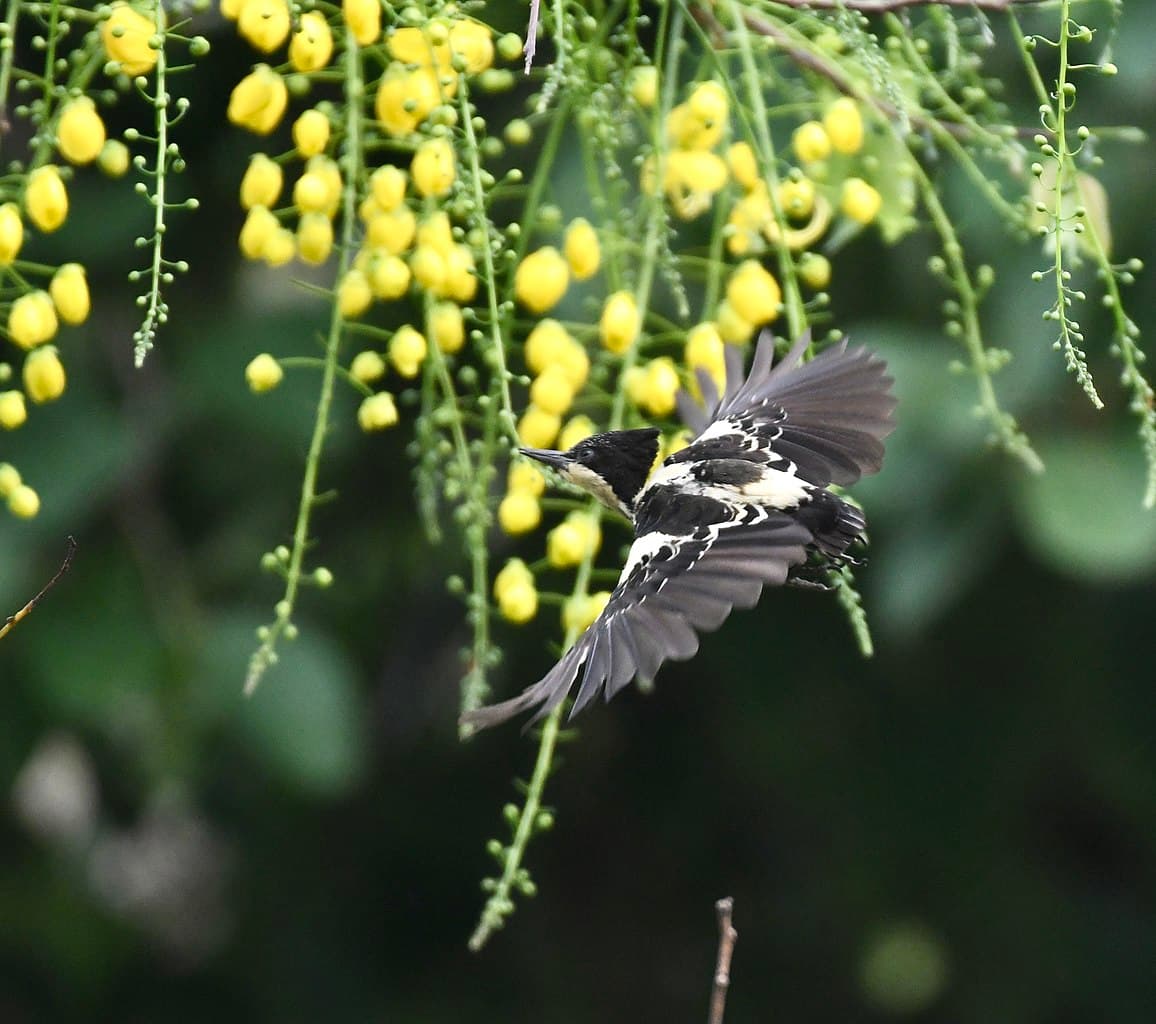
As for this woodpecker species, it has a contrasting black and white plumage with a large wedge-shaped head. This large crest makes its head look large as the body of this bird is distinctively stubby so recognizing one is not difficult. Both males and females have heart-shaped black spots on their white shoulders along with broad white scapular patches and barrings on their flight feathers.
The natural habitats of heart-spotted woodpeckers are subtropical or tropical moist lowland forests in South Asia and Southeast Asia. Every day, they move from tree to tree to search for caterpillars, grubs, termites, and other insect prey. Normally, these woodpeckers forage in pairs as they explore small leaf clusters and twigs for food.
Laced Woodpecker (ត្រសេះតូចក្បាលក្រហម)
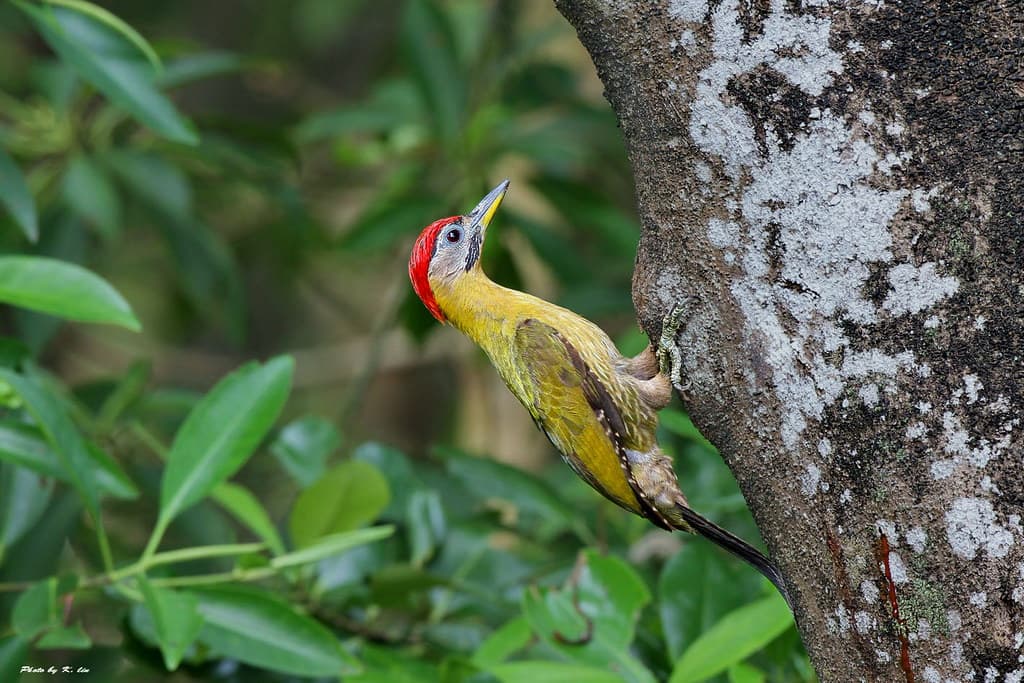
The plumage of these birds is plain whitish buff or pale yellow-green sometimes. Their upperparts are yellow-green that get more yellow on the rump. Male laced woodpeckers have a red forehead and crown with a short crest bordered by thin black lines. Females are quite similar but have a shorter bill and a black crown and nape.
Not different from other woodpecker species on the list, this one is also native throughout Southeast Asia as well. Some of the most common natural habitats of these birds are subtropical or tropical dry forests and subtropical or tropical mangrove forests. Others include subtropical or tropical moist lowland forests and subtropical or tropical moist montane forests. They can also be found in forest edges, gardens, parks, and secondary forests as well. Their favorable meals are beetles and flies, and they also forage on the ground for food sometimes.
Lesser Yellownape (ត្រសេះតូចកំប៉ោយលឿង)
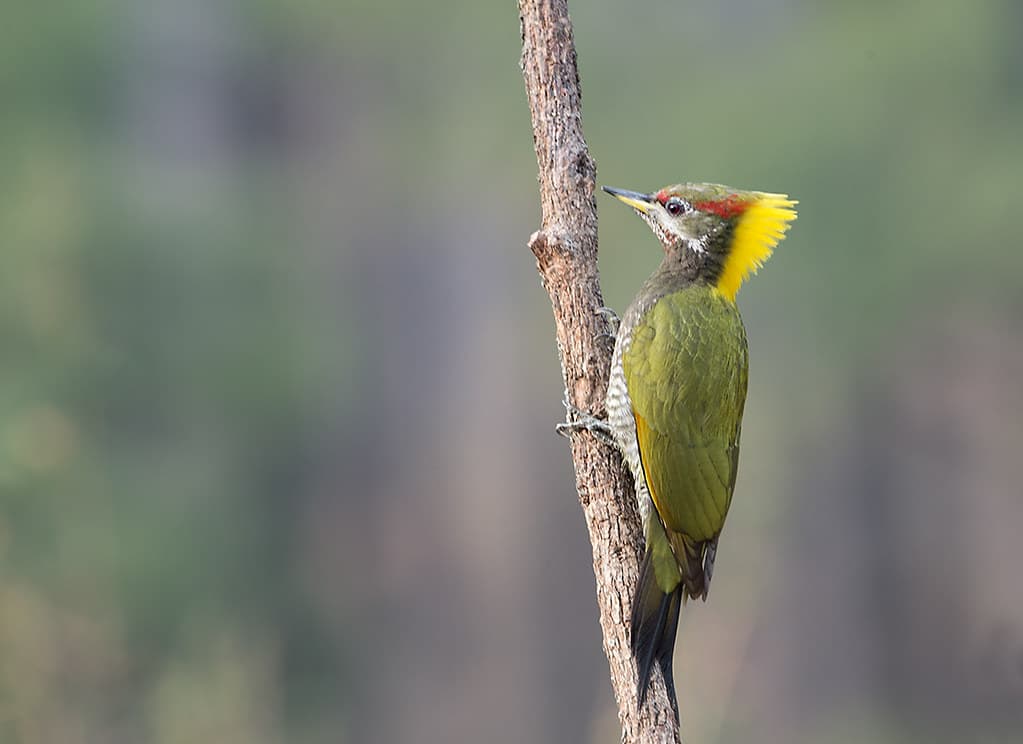
Growing up yo 27 centimeters in length, this woodpecker species is quite big. The upperparts of the birds are green while the nape is bright yellow. Their neck and breast are green, and the belly is whitish with fine green bars. Adults have a green head with a white throat along with red markings above the eye and nape. They have crimson mustache stripes, and only females have a red spot over the ear coverts.
Lesser yellownape woodpeckers live in the Indian Subcontinent and Southeast Asia, mostly in subtropical and tropical regions. They are very common in deciduous forests, evergreen forests, foothills, and woodlands. Just like other woodpeckers, they also feed on insects such as ants, beetles, and larvae as well as berries and nectar. So it is not unlikely to see them roosting among branches of damp forests, flowers, and tree trunks.
Pale-Headed Woodpecker (ត្រសេះក្បាលព្រលែត)
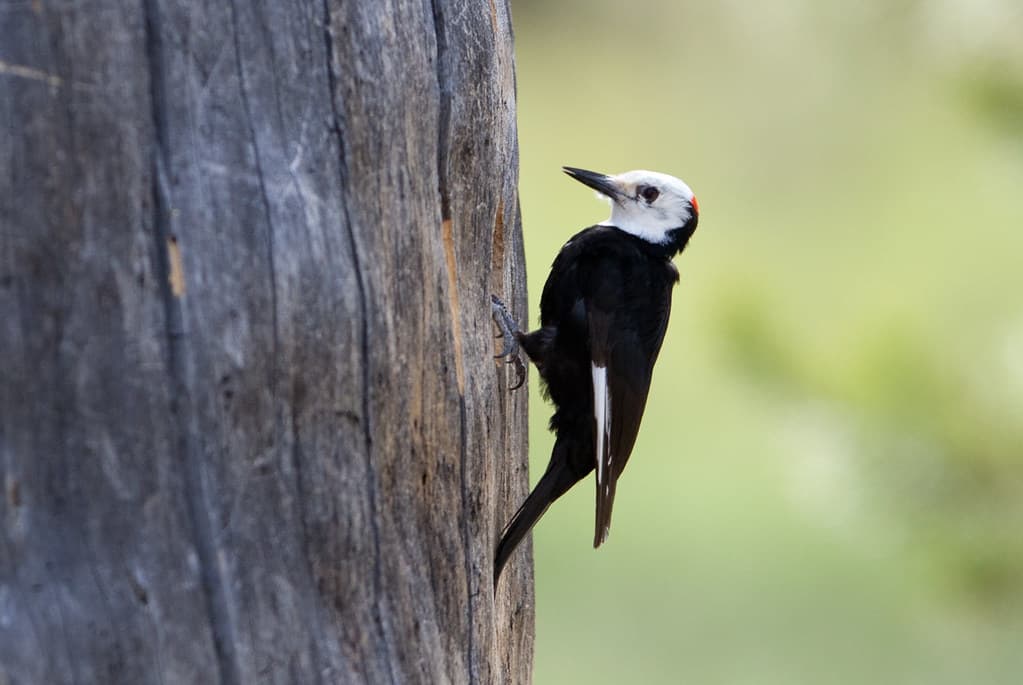
Pale-headed woodpeckers are unique birds with a glossy black body and a gleaming white head and neck. You can differentiate males from females by the red crown patch that only males possess. These woodpeckers live in subtropical or tropical dry forests and subtropical or tropical moist lowland forests in South and Southeast Asia. They feed heavily on large pine seeds so it is also common to find them in pine forests. When it comes to feeding, they tend to not drill into wood to get insects. Instead, they rather flake away bark or probe into needle clusters of recently burned areas.
Red-Collared Woodpecker (ត្រសេះចំកំកក្រហម)
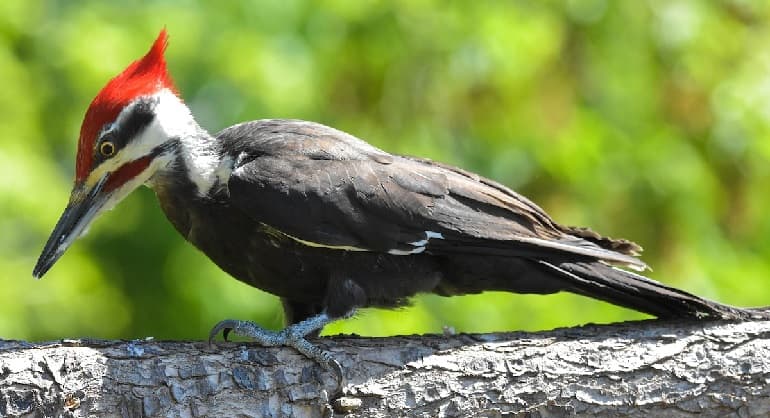
Male red-collared woodpeckers are black and white with a pale belly, and they have a red crown and nape. As for females, they have the same coloration and red nape but without the red crown. Red-collared woodpeckers are native to only a few countries in Southeast Asia including Cambodia, China, Laos, and Vietnam. The natural habitats of these birds are temperate forests that are not threatened by logging which leads to habitat loss.
Rufous Woodpecker (ត្រសេះត្នោតចំពុះខ្មៅ)
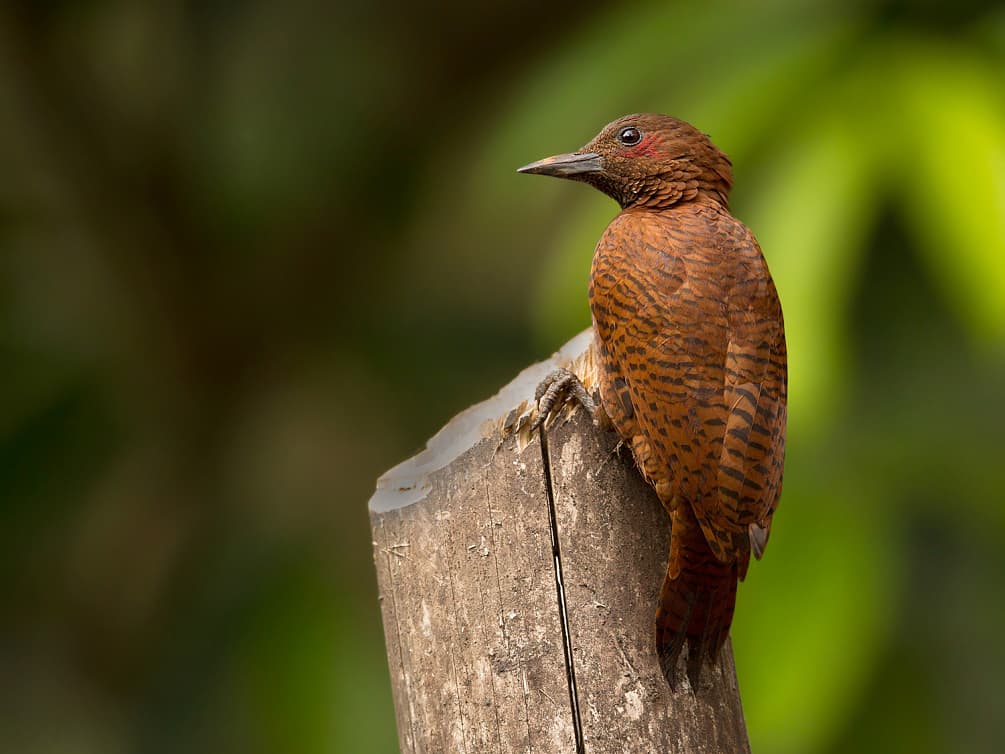
Growing to about 25 centimeters long, rufous woodpeckers are medium-sized birds that look quite interesting. The birds have an overall dark brown plumage with dark bands on the wing and tail feathers. Their heads are pale while the underparts are darker in shade. While most woodpeckers have a long bill, the rufous woodpeckers are rather different. They have a short bill that they use to feed on small insects such as ants and termites. Rufous woodpeckers live in deciduous, evergreen, and scrub forests where they forage in pairs.
Streak-Throated Woodpecker (ត្រសេះបៃតងទ្រូងពព្លាក់)
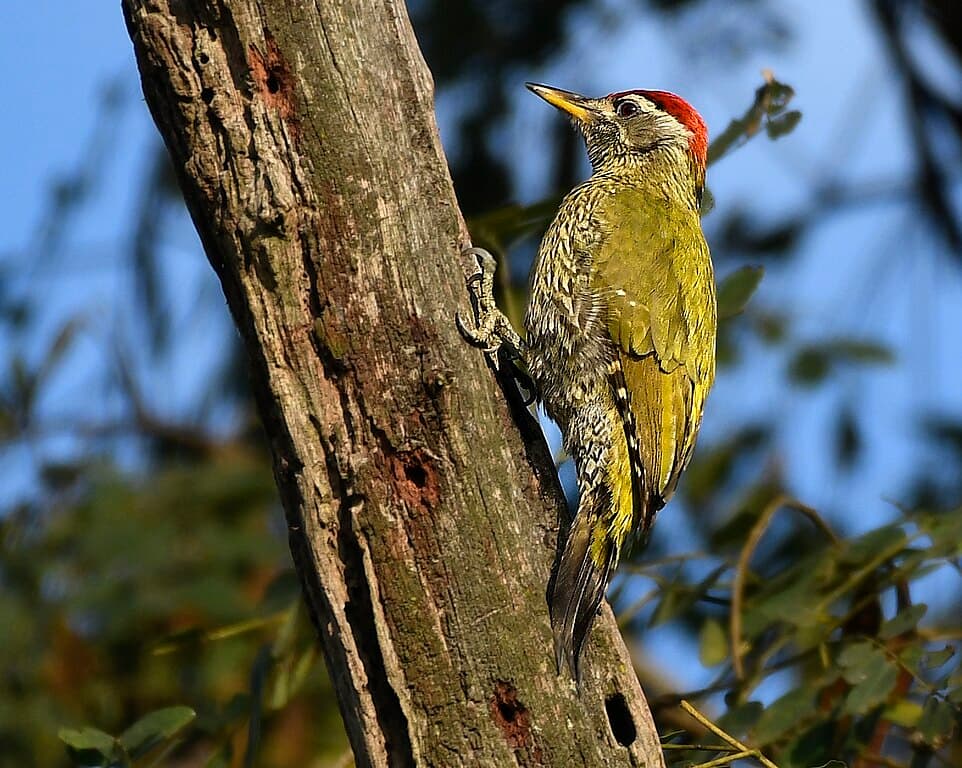
Here we have a green woodpecker that has a streaked throat and scaly whitish underparts. As for the upperparts, they are green and these birds have yellowish rump with white supercilia and black and white mustache. Both males and females have dark and plan tail along with small dark bills. You can distinguish between both sexes by the red crown in males and blackish crown in females. This woodpecker species is common in Asia and Southeast Asia where they live in urban residential areas.
White-Bellied Woodpecker (ត្រសេះធំពោះស)
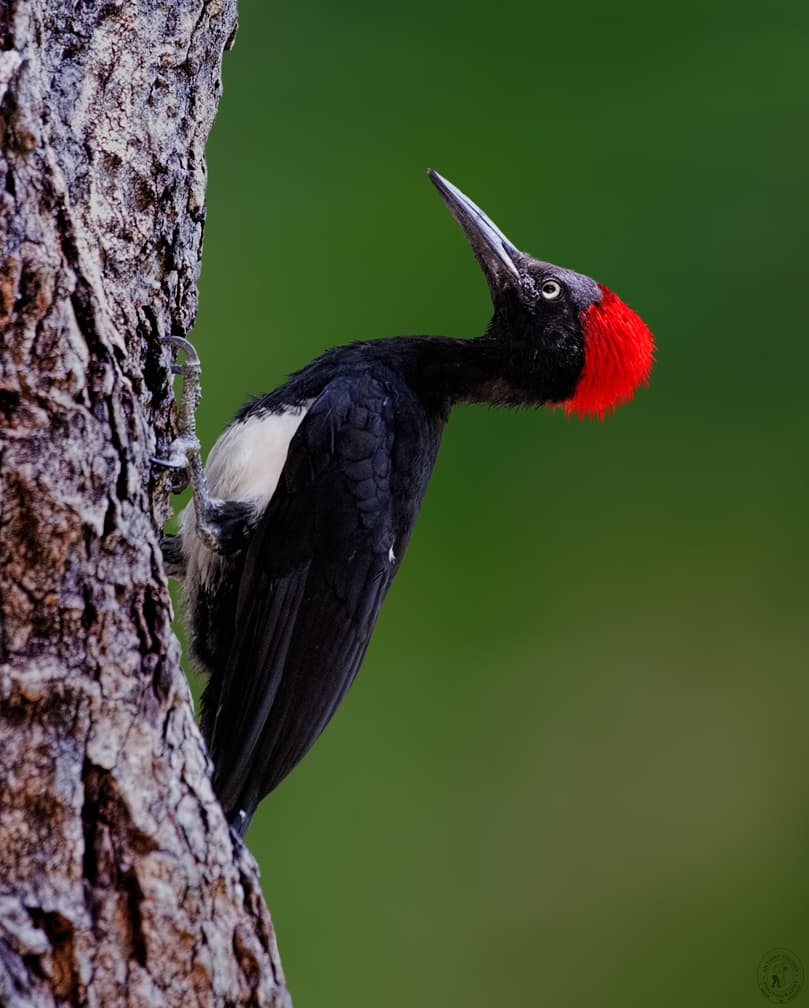
Being quite large, the white-bellied woodpecker grows from 40 to 48 centimeters. This woodpecker species has the classic look of the woodpecker that you often see in cartoons. The bird has a black plumage with white belly and red crown and crest. Males have reddish streaks on their throats and foreheads. Both sexes have dull-black beaks and yellowish irises.
This woodpecker species inhabit evergreen forests in tropical Indian Subcontinent and Southeast Asia. In some areas, they also live in bamboo forests, forest edges, mangroves, montane forests, and secondary forests. Usually, they nest in large dead trees that are often beside rivers and streams. Where they live, they feed on ants, beetles, termites, and other insects and fruits that they can find.
Yellow-Crowned Woodpecker (ត្រសេះតូចក្បាលលឿង)
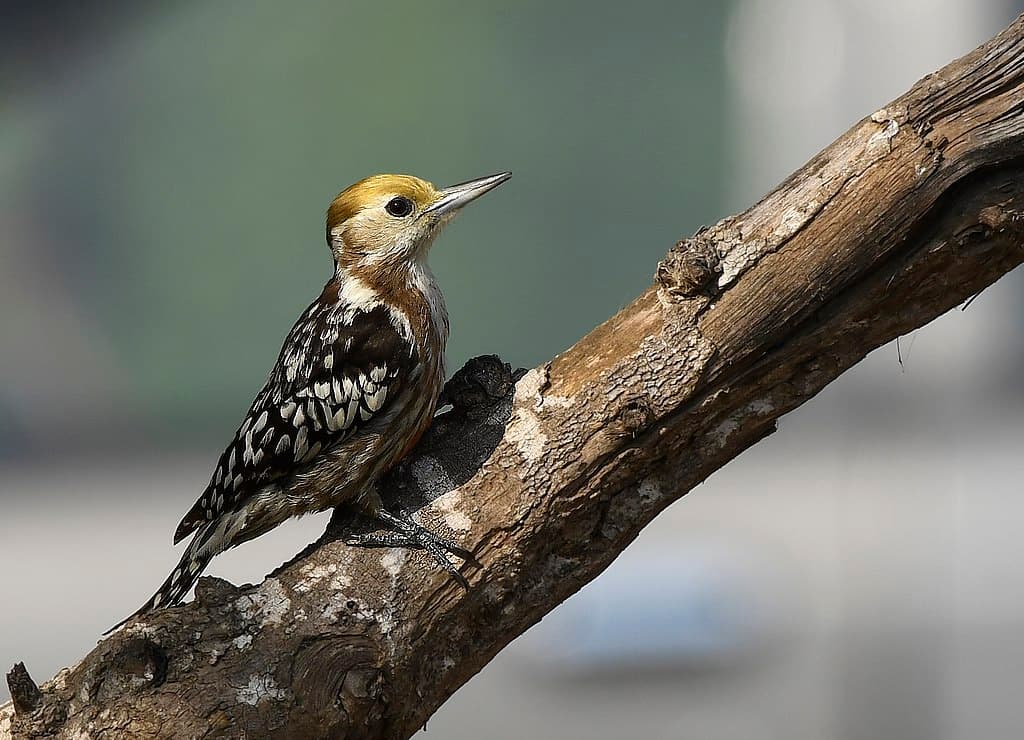
Being a little small, yellow-crowned woodpeckers are only around 17.5 centimeters big. A yellow-crowned woodpecker has a pale head, black upperparts with heavy spots and white bars, and dark underparts. The underparts have streaked dingy white with red belly patch, and it also has brown cheek and neck patches. You can distinguish a male and female by the yellowish crown and nape in females and scarlet nape in males.
Yellow-crowned woodpeckers live across South Asia and Southeast Asia where they live in desert scrub habitats and dry open woodlands. They usually frequent light deciduous forest regions, mango orchards, open scrub country regions, and tree groves. These woodpeckers fly from tree trunk to tree trunk and then halt to look for insects such as caterpillars and dragonflies. Sometimes they also feed on fruits and nectar as well.
Related Post: Owl Species In Cambodia
